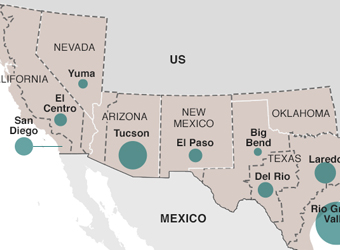Mexican rescuers raced against the clock on Wednesday to save a 12-year-old girl trapped beneath a collapsed school and reach other possible survivors buried in rubble in central Mexico following the country’s most deadly earthquake in three decades.
At least 237 people were killed by the 7.1-magnitude quake that struck about 150 km (90 miles) southeast of Mexico City on Tuesday afternoon, 32 years after a 1985 quake killed thousands.
Rescue workers were able to communicate with the girl, identified only as Frida Sofia, who responded that there were two other students nearby but she could not tell if they were alive, according to broadcaster Televisa, whose cameras and reporters had special access to the scene.
Rescuers previously had seen a hand protruding from the debris, and she wiggled her fingers when asked if she was still alive, Televisa said.
The girl’s full name was not made public, but her family waited in anguish nearby, knowing that the bodies of 21 school children and four adults were already recovered from the Enrique Rebsamen School.
They and other parents clung to hope after rescue teams reported a teacher and two students had sent text messages from within the rubble. Rescuers moved slowly, erecting makeshift wooden scaffolding to prevent rubble from crumbling further and seeking a path to the child through the unstable ruins. As in rescue scenes throughout the central Valley of Mexico, officials ruled out using heavy equipment as long as there were signs of life below.
Rescuers moved slowly, erecting makeshift wooden scaffolding to prevent rubble from crumbling further and seeking a path to the child through the unstable ruins. As in rescue scenes throughout the central Valley of Mexico, officials ruled out using heavy equipment as long as there were signs of life below.
Some 14 hours after the effort began, rescue workers in hard hats made an urgent plea on camera for beams and chains to support parts of the school ruins that were collapsing.
“We have a lot of hope that some will still be rescued,” said David Porras, one of scores of volunteers helping the search at the school for children aged 3 to 14.
“But we’re slow, like turtles,” he said.
Rescuers periodically demanded “total silence” bystanders, who would freeze in place and stay quiet, to better hear calls for help.
Similar efforts have pulled more than 50 survivors from buildings around the country, President Enrique Pena Nieto said in a national address.
Such rescues lead to impassioned cries of “Yes we can!” from responders and bystanders.
Fifty-two buildings collapsed in Mexico City alone, Mayor Miguel Angel Mancera told reporters.
In all the quake killed 102 people in Mexico City and the remaining 135 from five surrounding states. Another 1,900 people were treated for injuries, the president said.
The quake struck a mere 31 km (32 miles) beneath the surface, sending major shockwaves through the metropolitan area of some 20 million people. Much of the capital is built upon an ancient lake bed that shakes like jelly during a quake.
Initial reports suggest that collapses were limited mostly to buildings that predated the 1985 quake, after which stricter building codes were enacted.
“The central part of Mexico City, in the lake bed, is always going to be a complicated place to build,” said Rodrigo Suarez, chief operating officer at Mexico City-based apartment developer Hasta Capital. “These old buildings (may) survive an earthquake or two or three, but since they weren’t built to modern code, there’s always going to be a risk in major earthquakes.”
The national electric company restored service to 95 percent of the 5 million customers who had lost power, Pena Nieto said, and the state oil monopoly Pemex said its installations suffered no significant damage and that all its operations were normal.
Mexico was still recovering from another powerful tremor that killed nearly 100 people in the south of the country less than two weeks ago.
Reinforcements from other countries began to arrive and more were on the way. The United States, Israel, Spain, Japan and several Latin American countries had already responded with technical assistance and rescue teams, the president said.
A Panamanian team of 32 rescue workers dressed in orange jumpsuits and helmets and two dogs arrived at Mexico City’s international airport on Wednesday, prepared to go to work immediately searching for survivors.
They came self sufficient with seven days’ worth of food, water and supplies and prepared to work around the clock, said Cesar Lange, leader of the Panamanian Civil Protection unit.
The U.S. Agency for International Development (USAID) was sending a Disaster Assistance Response Team to help, at the request of the Mexican government, the agency said.
“The United States remains committed to helping our neighbors during this difficult time,” the statement said.
Throughout the capital, crews were joined by volunteers and bystanders who used dogs, cameras, motion detectors and heat-seeking equipment to detect victims who may still be alive.
Pena Nieto spent the day surveying several of the rescue sites, making note of the large number of university students and others have volunteered for the search and rescue effort.
“I have seen an active and very committed participation from the Mexican youth. … I have seen a lot of solidarity,” Pena Nieto said.
The president has been unusually visible since the two earthquakes, a sign of the political sensitivity of disaster relief less than a year before the next presidential election.
“We’re clearly aware that this is a test we cannot flunk,” said Senator Miguel Angel Chico of the ruling Institutional Revolutionary Party, or PRI.
Source: Reuters
